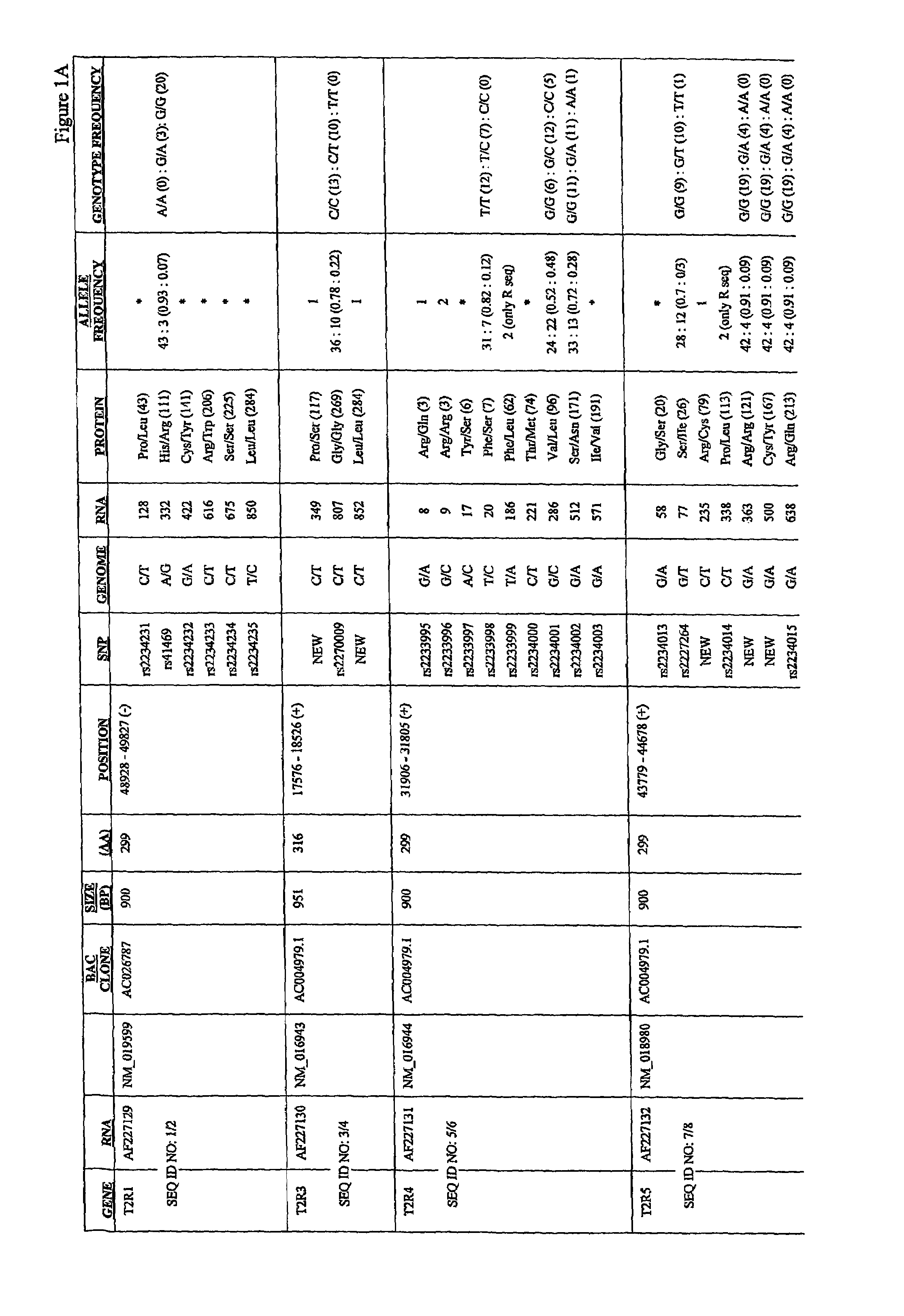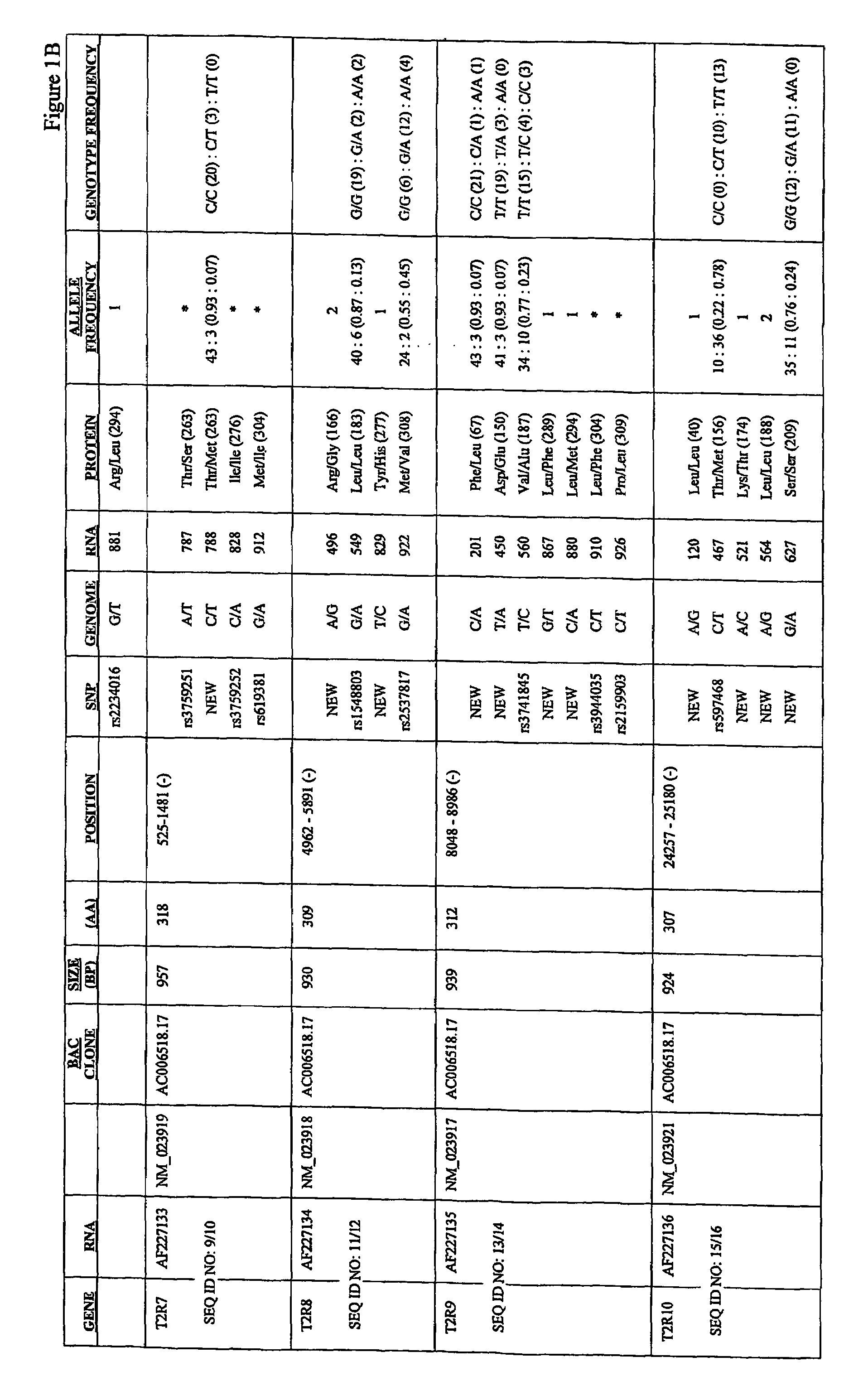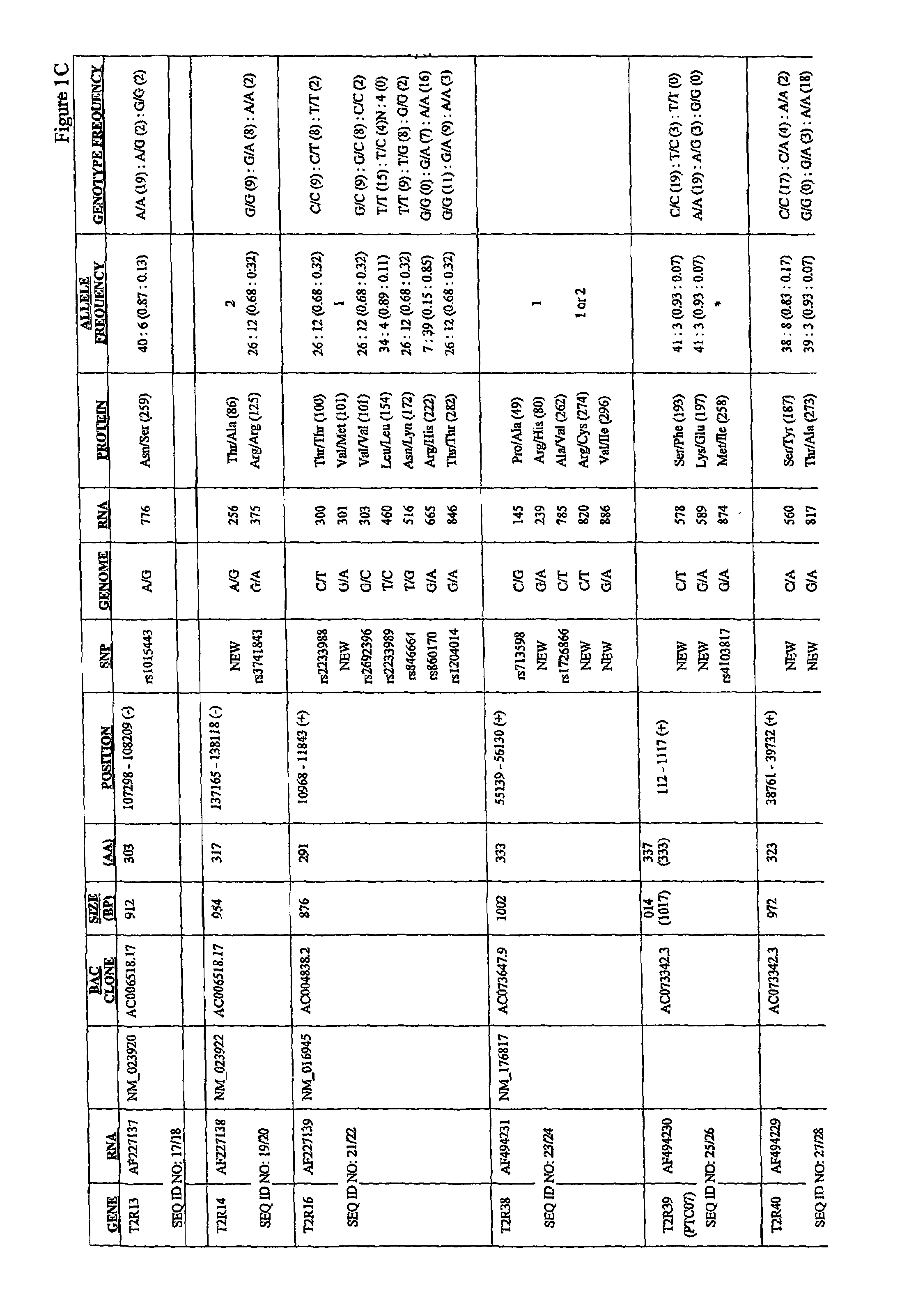Variants of human taste receptor genes
a technology of taste receptors and genes, applied in the field of taste reception, can solve problems such as difficult identification of receptor-ligand relationships of t2rs
- Summary
- Abstract
- Description
- Claims
- Application Information
AI Technical Summary
Benefits of technology
Problems solved by technology
Method used
Image
Examples
example 1
Characterization of SNPs in the T2R (TAS2R) Bitter Taste Receptor Gene PTC
[0238]The ability to taste the substance phenylthiocarbamide (PTC) has been widely used for genetic and anthropological studies, but genetic studies have produced conflicting results and demonstrated complex inheritance for this trait. We have identified a small region on chromosome 7q that shows strong linkage disequilibrium between SNP markers and PTC taste sensitivity in unrelated subjects. This region contains a single gene that encodes a member of the TAS2R bitter taste receptor family.
[0239]This example describes the identification and analysis of single nucleotide polymorphisms and haplotypes in the PTC gene. We identified three coding SNP's giving rise to five haplotypes in this gene worldwide. These haplotypes completely explain the bimodal distribution of PTC taste sensitivity, thus accounting for the inheritance of the classically defined taste insensitivity, and 55-85% of the variance in PTC sensit...
example 2
Natural Selection and Molecular Evolution in PTC
[0265]This example describes an investigation of selective effects on the phenylthiocarbamide (PTC) gene by use of analyses of molecular genetic data. By examining patterns of DNA sequence variation, we were able to test the PTC gene for evidence of long-term selective pressures. As predicted by Fisher >60 years ago (Fisher et al., Nature 144:7-50, 1939), we found support for the hypothesis that balancing natural selection has acted to maintain taster and nontaster alleles in human populations. This investigation has also been reported in Wooding et al. (J. Hum. Genet. 74:637-646, 2004), which is incorporated herein by reference in its entirety.
[0266]The ability to taste PTC is a classic phenotype that has long been known to vary in human populations. This phenotype is of genetic, epidemiologic, and evolutionary interest because the ability to taste PTC is correlated with the ability to taste other bitter substances, many of which are ...
example 3
Identification of SNPs in Other T2R Bitter Taste Receptors
[0291]Common allelic variants of a member of the TAS2R bitter taste receptor gene family underlie variation in the ability to taste phenylthiocarbamide (PTC). To extend these results to other bitter receptors, we have sequenced 22 of the 24 known TAS2R genes in a series of populations worldwide, including Hungarians, Japanese, Cameroonians, Pygmies, and South American Indians. This example provides description of this analysis, which was used to generate a comprehensive collection of single nucleotide polymorphisms in human T2R putative bitter taste receptors.
[0292]Using conventional methods, members of the human T2R family of putative bitter taste receptors were analyzed for the presence of SNPs. AU SNPs were identified and analyzed by DNA sequencing. Genomic DNA encoding each receptor was PCR'd using standard methods, and the products cycle sequenced with dye terminators using a Big Dye terminator kit from ABI. Products of ...
PUM
| Property | Measurement | Unit |
|---|---|---|
| temperature | aaaaa | aaaaa |
| thermal melting point Tm | aaaaa | aaaaa |
| temperature | aaaaa | aaaaa |
Abstract
Description
Claims
Application Information
 Login to View More
Login to View More - R&D
- Intellectual Property
- Life Sciences
- Materials
- Tech Scout
- Unparalleled Data Quality
- Higher Quality Content
- 60% Fewer Hallucinations
Browse by: Latest US Patents, China's latest patents, Technical Efficacy Thesaurus, Application Domain, Technology Topic, Popular Technical Reports.
© 2025 PatSnap. All rights reserved.Legal|Privacy policy|Modern Slavery Act Transparency Statement|Sitemap|About US| Contact US: help@patsnap.com



